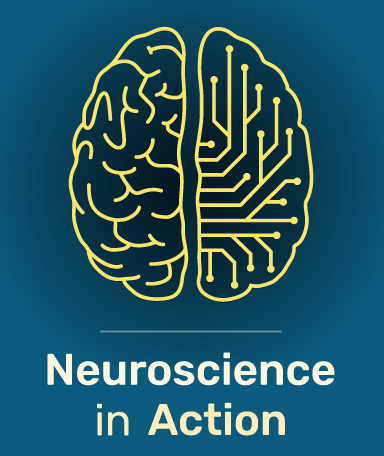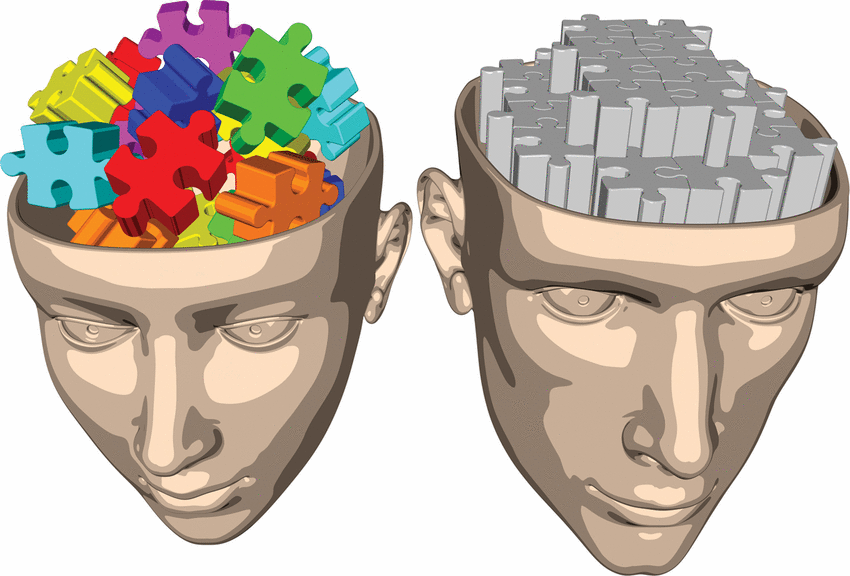Chapter 1. Motor Control: Getting Things Moving
Cortical Control and Organization of Movement
By:
In this activity you will explore how the nervous system produces movement. In particular, you will consider the organization of neural areas related to movement, the hierarchical control of movement, and how neural firing rates in the motor cortex adjust to movements.
After completing this activity, you should be able to:
- Describe the different cortical areas involved in movement and their primary roles in movement.
- Describe neuronal firing rate adjustments for changes in force required for movement.
- Explain the connection between the descending motor tracks and location of movements (distal or proximal).
- Understand how other non-cortical neuronal circuits modulate movement.
This activity relates to the following principles of nervous system function:
- Principle 1: The Nervous System Produces Movement in a Perceptual World the Brain Constructs
- Principle 4: The CNS Functions on Multiple Levels
- Principle 6: Brain Systems Are Organized Hierarchically and in Parallel
- Principle 7: Sensory and Motor Divisions Permeate the Nervous System
Movement requires the use of multiple CNS areas, including the cerebrum, the brainstem, and the spinal cord. Multiple frontal lobe cortical areas are important for the initiation of appropriate movements and are primarily involved in different aspects of any movement.
Imagine that you are sitting in class, listening to a lecture, and you have decided to write down what your instructor has just said. The motor actions necessary to complete this voluntary task can be described in three simplified steps. Watch the video below and read the descriptions to see the connection between cortical areas and these simplified steps.
The first step in this movement is to decide to pick up the pencil and the paper to write a note. The prefrontal cortex (PFC) is important for planning appropriate movements including the decision to move. The second step in this voluntary task is to coordinate the placement of paper on the table and movement to pick up the pencil. The premotor cortex is important for the coordination of movements necessary to properly place the paper and pencil. The third step is producing the specific grasp needed to pick up the pencil. The motor cortex is critical for producing skilled movements like the grasp necessary to pick up the pencil.
The motor cortex, located in the frontal lobe, controls focal skilled movements, such as grasping an object. Researchers have learned about the role and importance of the motor cortex in these skilled movements by observing the neuronal firing patterns in the motor cortex before, during, and after a movement is made. Motor cortex neurons increase their firing rate prior to the actual movement and change firing rates depending on the amount of force required in the movement.
Using the pincer grip to pick up an object requires a focal skilled movement, and thus the motor cortex. Let’s examine the typical neural firing pattern in the motor cortex that we can expect when grasping various objects. Each line in the meter underneath the brain image represents an action potential produced in the neuron.
Question 1.
eqdl0WZerO8zOcdqxLDyyL7n10OB6Sk8w6Qyka2C809K3ONaK8nJpxFgeLIds8y0jELseYv4ij1FsOZYFC7TpLNl8Of0pttukvWxtCQS50lvsRfQhCtd7G8i1saVcakpCopLWSyLlYNNdsNHZjs0g/yx499zZe1+2P/o5WzYstnrskzkWfO9ESv1NRIQ7JhkaM+HAkBElfhf4S4DblDn43CRfS9I2ghXJYn4X+nnmqzjb+GtozdHDxx/xrtG5S138IL+EuJgO71VKS5maiODLA==Your answer has been provisionally accepted. You'll get full credit for now, but your instructor may update your grade later after evaluating it.
Let’s look more closely at how the motor cortex produces movement. Bundles of axons originating from the motor cortex divide in the brainstem into two corticospinal tracts—the lateral corticospinal tract and the anterior corticospinal tract. These axons carry neural information (action potentials) from the motor cortex to the brainstem and spinal cord so that movements can be executed.
Injury to the corticospinal tracts can result in paralysis to various parts of the body, depending on where the injury is located. Let’s investigate some possible injuries and their effects on movement. Select each of the three boxed regions of the figure to read a brief description.
Note: you must choose all areas before proceeding.
Question
4cLc7JnUEDNv0fOkkE0/5TYSfWJV6ng3FVMUv9W6mE94VJsAmA2N6zjYTYf2odNkgpOsv04SpepOnkfq57NI7eKZ+/SxBbMN0OC51YO+y0+kNMbkx/VHGzFyWjpiBznXu2AaaBs0vF54RnUsjgrjXedx13mSBIJLJI0ljhqbnrUbaGepMBCPUrC5R5EChGwE61hZ8JZJsUTS9toaa/rudcq4wtW4GXj+ieP3YMGzZrLvY2SM5W+IEJBmBEFnZR0ypqBi4mGArDumIai3c+4NAEOv5V9p5XreEv9qIEokpBpz29YOrOHWYq+Oer/IJbpjcT2hddNptkaeErGRn9GwKDVtdRvbNvY8pkiZfSk7lq229YBn2rQSA/6E/s2YqG9ucPTejHgvOK9IoDWeACibNQjBS9zCI25jxoBcGShbcAr8+l9KBOL/PPpresWzdFbdsrO7cZ6SiyQdFp8elY1pdagKo3u9omI/5/EbSCn0s0E2pBSPz6rW/u2PDRZwO7SzsHHQ+17XuCSpPRSoZ5rw2DqxX0sC6T6unlNhm/C76omeLHXTGotrd+Zk2ulzCf8qT6ZAq6XbiwL5KRqQEsQKeAaM2ZqITa/Huw1Jbe1tXuNn7J1rL20JswHqTU2MvwZ3/DT0uErEXXI8k2V5QhmWjDlHV/vS4FoAftQzOAT7HMtgmw1h96w1GTiwwsfZoGYheFuoMUD+bP8fCJmRbo7MlPAk57S2B0RVsZJQV+HPqZoH/3rhkIQw1efYbM6LY1tPgJn8KOtCjNDxwnYrXYUYJ5952EDV/XFNR3fWmAaMcSaDjIG10TtNSUzNqOA+S3mGF0PMroimzQCnov3jAuGndqgcLGdgPWABTfkiuDH1KqD/lSONZwFz3DUj9N4AhNJcMhHvOgM32tDTsYCeJLJXPrxtrZz6/fJkLen6flQ6Dh83Xy8oGwzhEDlTcVgc01be4oZIEnaSReT7eEjHwelrISvd7kkVobd94e2GlljSUIweGu9uTOOIMMuGgFp9arpjcerstDS9U392Ohum0N9JVWhppktwVr8+ULNoXpwbTo9uS2J7C2PTgYmWnu5SZjF9aZ8Neru+WY0+uGQ4dvhwBZr7ZG4AguEfzu8YjIx3OCn5dQNtpijbHbixHK0uO4wQ1T6RDtKC9sUBBHLRA3rsm3vcJQPryhN/Bk2aAttxgHPwpohqWbIxmBOfNUlzOVUjkVI0XQsFJg/wsSvxFO81rsN7pwLPoYM0UCiHWrtePpshXfBAGA9AbOOSOtQLoYwXUDBVNmRr9M7sEU7MiF5+LHKnLPuFQR0SYNwGxN8cZVbXx3F0IXksdSZ3jJzLTf7VyCOaPVFt9fLJOQRJDhmuQtuvSssvJXUn702OiARUEZ8s1OdxZL3H3l7T9TJXIpO6CRRZb5EdpmnrD9aB0zQ2p9u6ygGtX9xt4oD/YmkgGPR0OMVuE2qsZXfkzw5+42TV3kTDuUqAk45mlN2s7nKjMtKcwePDD2FIRMe7smfTpzvOEk5udtW+7skHC1QKIH9DvNPPxRmZ25S25bnbHa/SoUMbl4VRPRXREjeijE3swoJbDbhQKDF+EctbOi9XcDBYSLlZaDLkW4BSbiMvOpiim03fk3IeOFRi3z4sNb+w/e3AVpZVheFw1PKql4sMkIXfvCFzAaC/N4x4paHoyB0UcQ==Question 2.
gdjf8vsUIeZlXO0eolgrl/53PHM6a0yuqN4fG8QPAS3j7/n1ApFvB7AvB6WOmeBSum1Q6VWkKyTbD1inT2iDp6xBmTsLOVAi599l5thXinKs/I8ICyWvY069pVyLjuoQEgHqDWlnw+JPjB/2ctc+QgexmjeUBL9ma6S7LcpKjrkjoPNJsbPZLNNKKnXqFWxmjjjTnZ8uSLgxli3TenWdfSZEkc4Te73NH8ctXdpLOcrZCmoGPUtW28unFSg=Your answer has been provisionally accepted. You'll get full credit for now, but your instructor may update your grade later after evaluating it.
Finally, let’s explore the basal ganglia, a collection of nuclei that have extensive synaptic connections with the motor cortex. The basal ganglia do not directly produce movement, but they do modulate activity in the motor cortex. The influence of the basal ganglia on movement can be seen in conditions such as Parkinson disease and Huntington disease, in which the basal ganglia are damaged.
The basal ganglia operate through two neural pathways: direct and indirect. To illustrate the influence of the basal ganglia on movement, let’s consider the role of excitatory and inhibitory connections in the direct pathway, which involves the putamen, the globus pallidus internal, and the thalamus. In the figure below, excitatory connections (axons that release glutamate) are shown in green; inhibitory connections (axons that release GABA) are shown in red.
Choose to either Increase or Decrease the excitatory input to the Putamen, and then cycle through the steps to see the change that this produces in the direct neural pathway.
Excitatory Input to Putamen
Step 1. Increased excitatory input to the putamen will produce excitatory postsynaptic potentials and therefore increase the number of action potentials from neurons in the putamen.
Step 2. Increased action potentials from the putamen will release more GABA in the synapse between the putamen and globus pallidus internal (GPi). GABA produces inhibitory postsynaptic potentials and will decrease the number of action potentials in the GPi.
Step 3. Decreased action potentials from the GPi will decrease the release of GABA in the synapse with the thalamus. Reduced release of GABA, which is inhibitory, actually increases the firing rate of the thalamus due to other excitatory inputs.
Step 4. Increased action potentials from the thalamus will release glutamate in the cortex and produce excitatory postsynaptic potentials, increasing action potentials in the cortex and increasing the likelihood of motor production.
Step 1. Decreased excitatory input to the putamen will decrease the number of excitatory postsynaptic potentials and therefore decrease the number of action potentials from neurons in the putamen.
Step 2. Decreased action potentials from the putamen will decrease the release of GABA in the synapse between the putamen and the globus pallidus internal (GPi). Reduced GABA reduces the inhibitory input and therefore increases the number of action potentials in the GPi due to other excitatory inputs.
Step 3. Increased action potentials from the GPi will increase the release of GABA in the synapse with the thalamus. Increased release of GABA will produce inhibitory postsynaptic potentials and decrease the firing rate of the thalamus.
Step 4. Decreased action potentials from the thalamus will reduce excitatory postsynaptic potentials in the cortex and decrease the likelihood of motor production.
Congratulations! You have successfully completed the activity. In this activity, you reviewed the anatomical and functional roles of multiple cortical areas in the frontal lobe related to motor movement and examined how motor cortex neurons respond to changes in force required to perform motor tasks. You then explored the connection between regions of the descending corticospinal tracks and types of motor movement. Finally, you learned about the basal ganglia and how they can modulate activity in the motor cortex.
Your instructor may now have you take a short quiz about this activity. Good luck!

